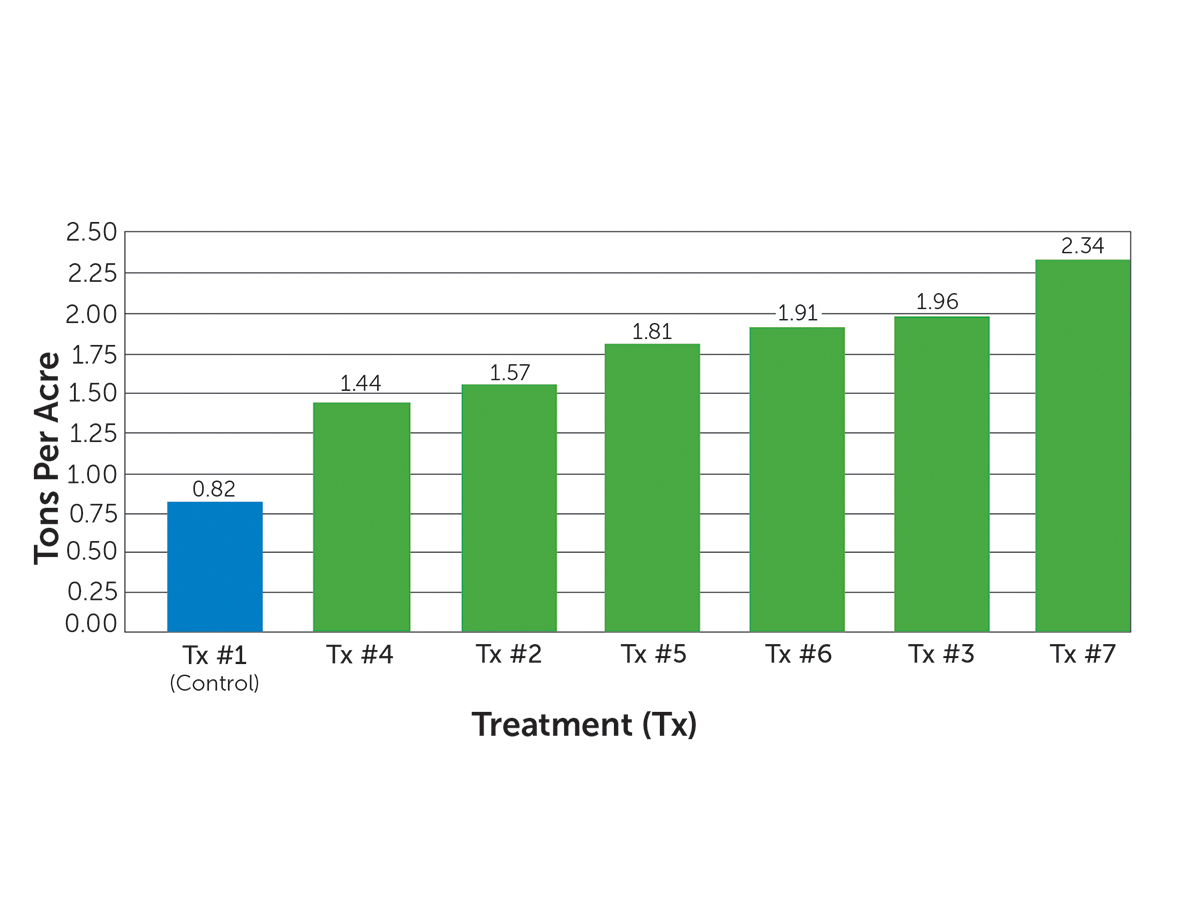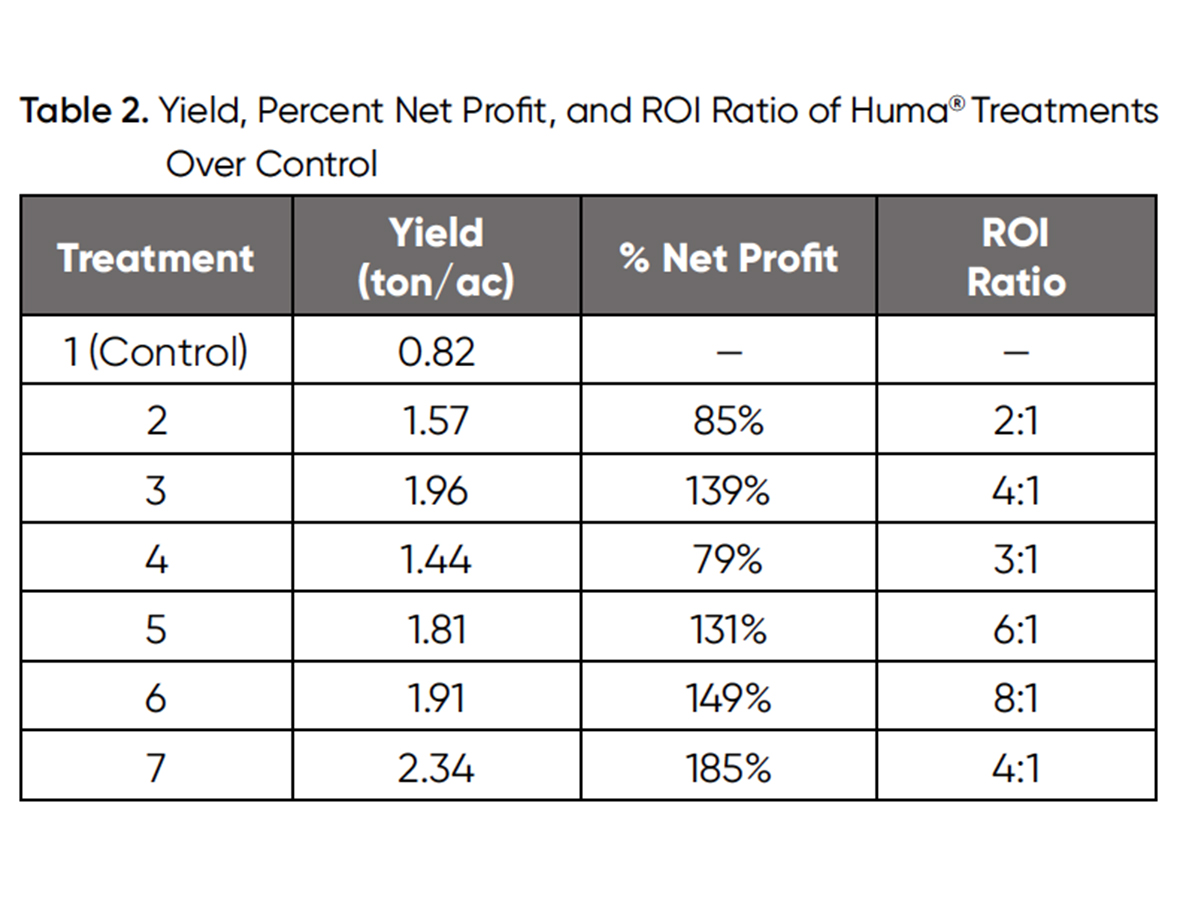Objective
This field trial was conducted in order to compare peanut crop yields and return on investment (ROI) obtained when Huma® products were applied in various combinations in comparison with a grower standard program.
Materials & Methods
This trial on peanut (Arachis hypogaea, Var. GA-12Y) was conducted in Memphis, Tenn., in a randomized complete block study with 4 replications in 12.6’ x 30’ plots. The peanuts were planted on June 25 and harvested on December 14. Seven treatment programs were compared as shown in Table 1.

Huma® Program Increases Peanut Yield Under Severe Conditions Table 1
Results

Figure 1. Peanut Yield Results by Treatment, in Tons per Acre
All the Huma® treatments yielded significantly higher than the grower standard (Control). Treatment 7 resulted in the highest yield (2.34 ton/acre) compared with the Control (0.82 ton/acre), with Treatment 3 next highest at 1.96 ton/ac. The average rainfall in Tennessee ranged from 20% to over 40% higher in 2019 than 2018. Generally, the average peanuts yield for the southern region is about 2 ton/acre. However, due to unfavorable weather conditions in the area the overall yield production was lower than normal for the Control treatment at 0.83 ton/acre. It is noteworthy that Treatment 7 (2.34 ton/acre) yielded 17% higher than the normal regional average peanut yield (2 ton/acre).
Based on a peanut market price of $440/ton, Table 2 shows yield and net profit, along with the return on investment (ROI) ratio, for the 6 treatments over the control. Treatment 7 showed the highest percentage of yield increase over the control (185%). An ROI ratio of 8:1 occurred for Treatment 6.

Table 2. Yield, Percent Net Profit, and ROI Ratio of Huma® Treatments
Over Control
Conclusions
Micro Carbon Technology® in Huma® soil and foliar products contributed to significant peanut yield and revenue increases in all the Huma® treatments evaluated in this study. Though adding Huma® products increased initial costs, the greater yields and net profits generated by the treatments resulted in a return on investment that paid for the cost and application of the Huma® products many times over ($2–$8 dollars returned for every $1 spent).

